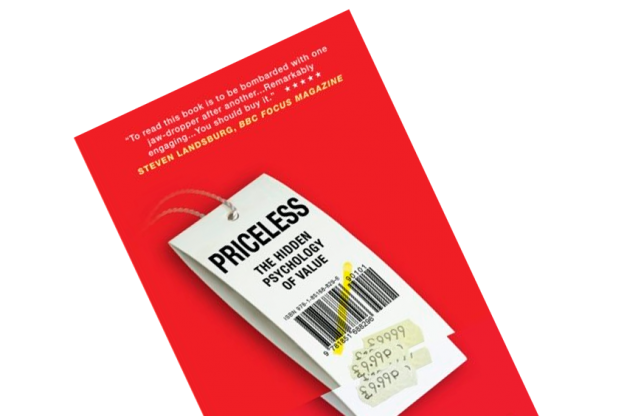Abstract
- Intrinsic value – that fair value, which a security should trade at as so forth the market was governed exclusively by intelligent and rational buyers and sellers – is the investor’s anchor around which price fluctuates. These price swings are the making of Mr. Market, who is a simpleton who doesn’t know what stocks are worth.
- If we know Mr. Market is a source of mischieves, why do market participants continue to let him dictate what their holdings are worth? A study’s findings enlighten us.
Granted, I have introduced Mr. Market more than once here on the blog, i.e. in the book summary of The Intelligent Investor and in my reflections on the value investing philosophy in What is value investing? and The Value Investor’s Mindset. Yet, as the concept is so key and Priceless’ chapter on the matter is so excellent, I’ll use Warren Buffett’s wise words to guard against any attacks on my repetitions: “Too much of a good thing can be wonderful.”
The Mischievous Mr. Market
Such is chapter 49 of Priceless titled, and what an appropriate one it is! Every value investor knows that price and value are two proponents of each security, as neatly formulated by Warren Buffett: “Price is what you pay, value is what you get.” Investing opportunities present themselves when these are out of sync. You could short a stock you regard as overvalued, or you could go long in a stock that appears to be undervalued. In any case, value – that fair value, which a security should trade at as so forth the market was governed exclusively by intelligent and rational buyers and sellers – is the investor’s anchor around which price fluctuates.
These price swings are the making of Mr. Market. The author of Priceless, William Poundstone, puts it as such: “Graham caricatured the price psychology of investors in ‘Mr. Market’. He’s a well-meaning simpleton who shows up at your door every weekday offering to buy or sell stock. […] Mr. Market really doesn’t know what stocks are worth. The clever investor can profit from this.” (p. 256)
A definition such as this may sound familiar to a lot of value investors, probably because they’ve been voiced again and again since the publication of The Intelligent Investor in 1949. Yet, if we know Mr. Market is a simpleton, a troublemaker, a source of mischieves, why do market participants continue to let him dictate what their holdings are worth?
Mr. Camerer, enlighten us!
The answer to that question may very well be found in Colin Camerer’s experimental studies of market prices. In said studies, Colin created a super-simplified stock market. In a 75 minute experiment, each participant started out with some real money and 2 virtual shares that paid out 24 cents in dividends every five minute. Logically, the stock would be worth $3.60, and its value would descend like a staircase every five minute as the dividends were paid out. The stock started trading at $3, quickly rose to $3.60 where it hovered throughout most of the experiment. Yet, during the last ten minutes when reality (or logic) finally struck, prices crashed. The participants described their reasoning: “Sure, I knew the prices were way too high, but I saw other people buying and selling at high prices. I figured I could buy, collect a dividend or two, and then sell at the same price to some other idiot.” (p. 259)
If this reasoning sounds familiar, you might have read The Value Investor’s Mindset post. Let’s recap: “The Greater Fool Theory dictates that ‘investors’ buy assets based on an irrational gut feeling that said asset’s price (not value!) will increase, hence allowing the ‘investor’ to sell it to a ‘greater fool’ later on. Rationality, analysis and intrinsic value aren’t given any credit. Rather, the asset is acquired with the sole purpose of dumping it to someone else.”
Hence, due to the excessive confidence (read Irrational Exuberance) that most investors ‘suffer from’, The Greater Fool Theory is more than just a theory; it’s a force, which may explain why “stock prices could be a collective hallucination.” (p. 257)
Take-aways: Have we learned anything?
Well, William doesn’t provide any learning points from these studies and tales of irrationality. It’s up to the reader to interpret. But the concept of Mr. Market surely is as relevant today as in Graham’s era. In the emotional spectrum from panic to euphoria, opportunities arise and diminish all the time. It appears that market participants have yet to master the art of rational thinking. This fact should pave the way for contrarian investors who have the courage to swim against the current or stay on the sideline when there isn’t an attractive price-value relationship.
I arrive at the conclusion I always find myself returning to when discussing Mr. Market and the price-value distinction: stay rational, calculate conservative estimates of a business’ intrinsic value, and only strike when Mr. Market offers a bargain price that offers a comfortable margin of safety.
